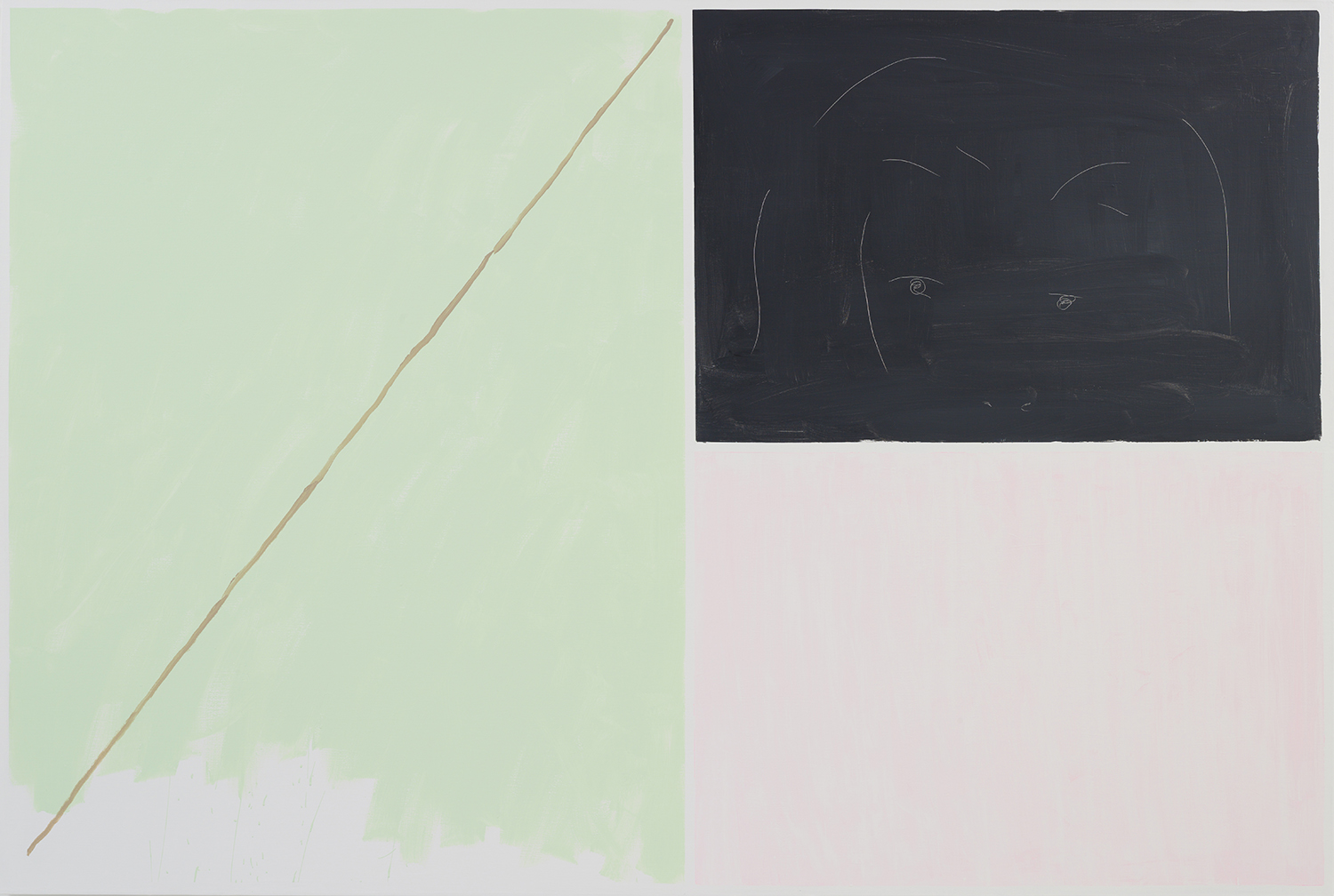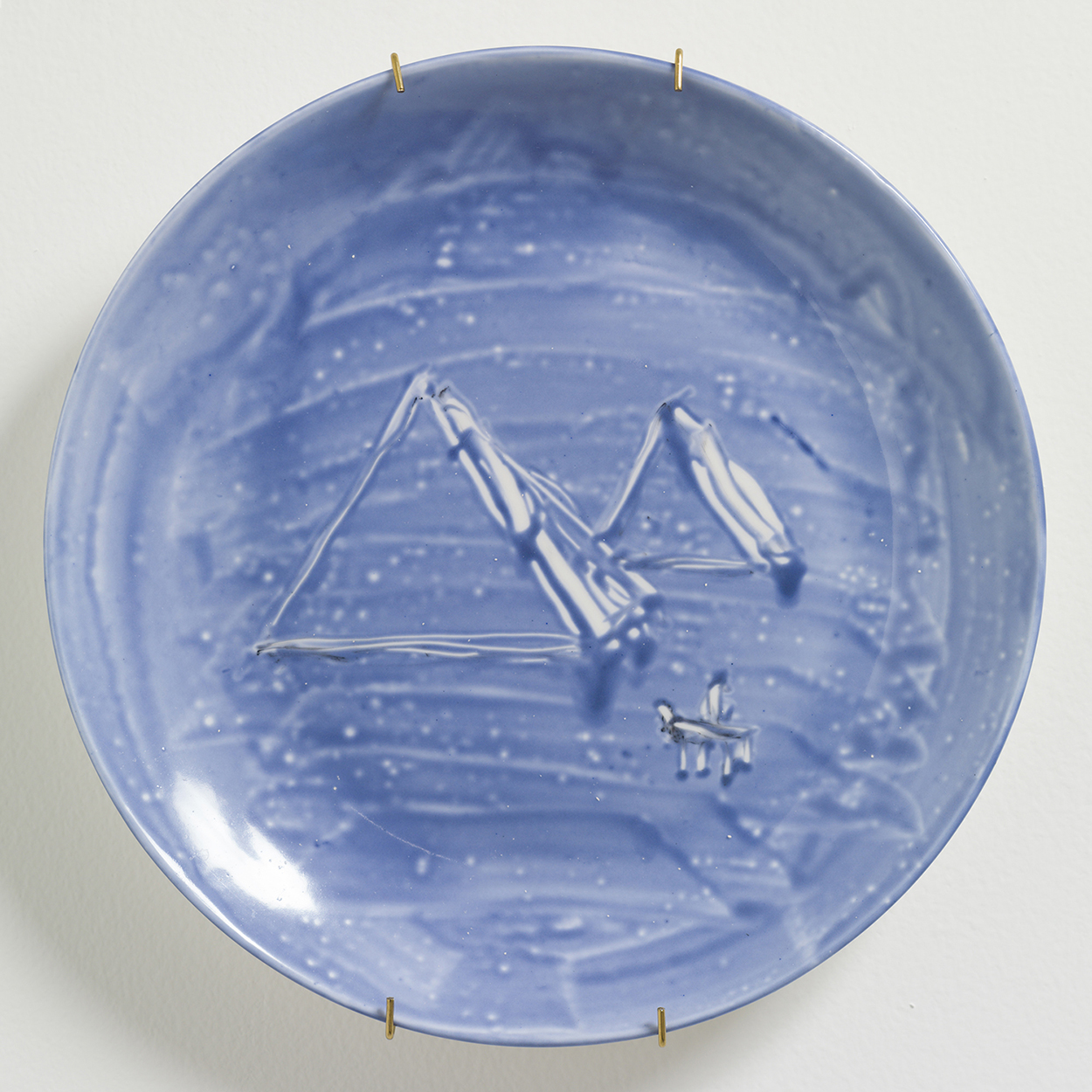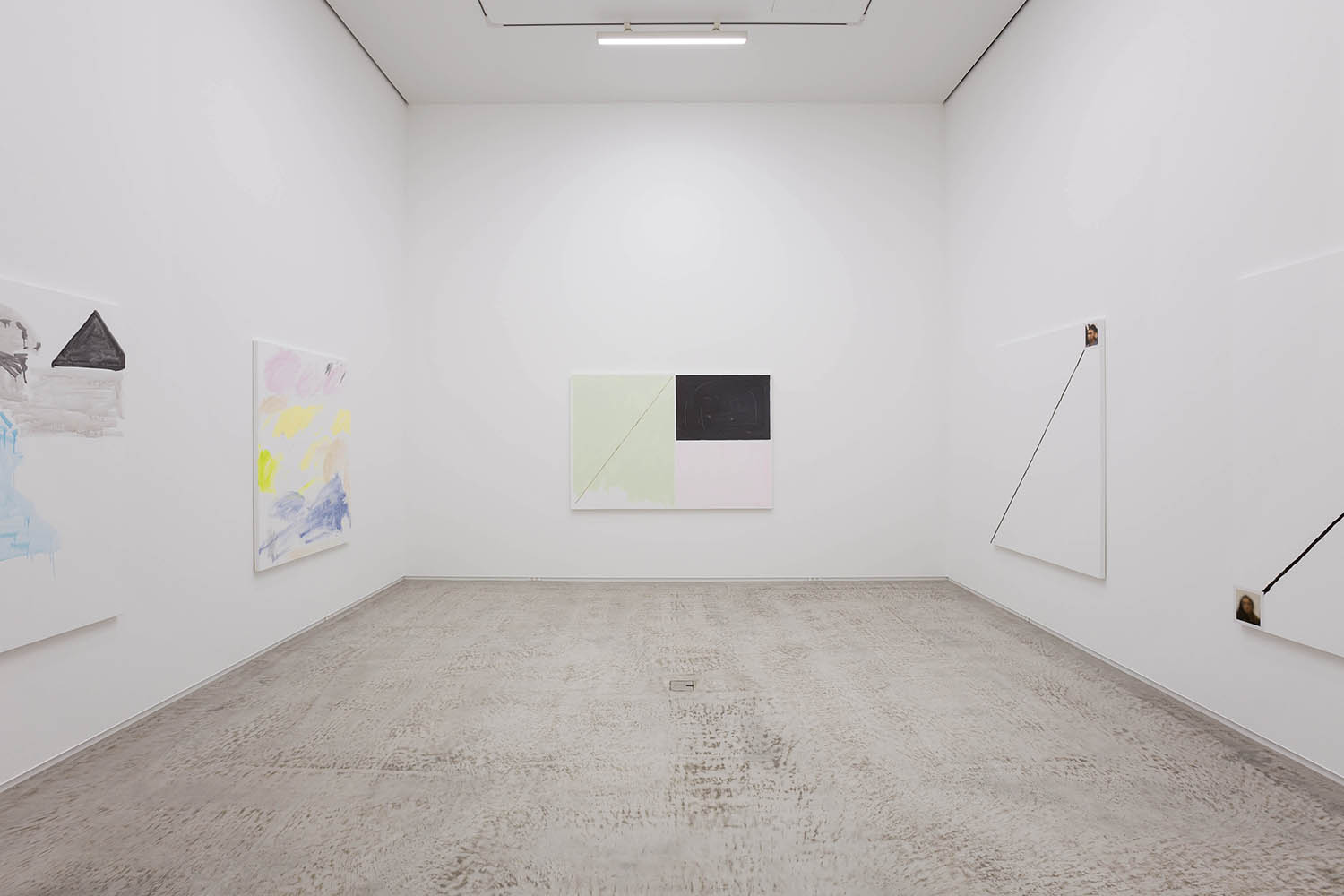Shows
Shimon Minamikawa’s “A Language All Your Own”


Shimon Minamikawa
A Language All Your Own
Misako & Rosen
Tokyo
Eleven years have passed since Misako & Rosen gallery opened in Tokyo in a building that no longer exists. After having relocated while the building was redeveloped from the ground up, they have now returned to their old address, a new home in an altogether different building, with an exhibition by the first artist they showed back in 2006.
Painting exhibitions rarely stray from familiar territory and are even less likely to be self-critical. Yet, Shimon Minamikawa’s “A Language All Your Own” was a comment on the purpose of painting as it exists today. Of the canvases on display, Three Sphinx (2017), which features the faint impression of Egyptian pyramids, is hung alongside Untitled, Untitled (2017) with the pencil-thin outline of a face lost among similar blocks of soft color. In contrast, the faces in A Technique of Painting, Called Collage (2017), positioned on the other side of the gallery, are cropped from a photograph of a fashion show and sit in the corners of the composition, just short of being struck through by a black diagonal line. In the very center was Fact Check (2017), which uses elements of both dense pastel coloring and a graphic minimalism to subdivide the canvas and the space itself. The exhibition was brought together by the artist’s reimagining of the process of painting as a “contact sport,” with marks and colliding particles cancelling each other out. These marks, along with the collage of outlines and fields of color point at an inherent obsolescence in painting—a space of pure invention caught between fact and fiction, what is seen and what is clearly absent.





The strength of the show laid in its visual simplicity, which in turn evoked the sense that the works were manipulative at heart. The show touched upon the idea of the exhibition itself as a psychological event, where the works and the audience exchange looks—a pair of eyes peer out from Fact Check, for example. Images also glanced back at the gallery space and reflected themselves, such as with the two ceramic plates titled Painting Appreciation (2017), one of which depicts someone looking at a painting not dissimilar to those on the wall.
The essay by Sen Uesaki, which accompanies the show, describes Minamikawa’s way of painting as “a waiting ground” and space of uncertainty, in line with English novelist JG Ballard’s written work. For Ballard, images and events occur in a language distinct from the everyday world. He thought the natural exhibition space was best served as “a radical statement about the human imagination.” Ballard’s short story The Atrocity Exhibition (1966) was written as a partial response to the media frenzy surrounding President Kennedy’s assassination. The media spectacle retained momentum well after his very graphic death, and the grief-stricken visual landscape began changing along with the constant stream of imagery. Its “real sympathy,” Ballard remarked, “began to leak away and only sensation was left.” The sensation of Minamikawa’s paintings hint as much at what’s missing as what remains. Decoration is shed to reveal the stark framework of vivid canvas and ceramic glaze. There is no slow motion car crash, no bullet wound or rivulet of blood. Instead, Minamikawa explores painting through the slow death of the painted canvas itself, and the state of mind that each inspires.
As the exhibition title suggests, a language of ‘painting’ is open to interpretation, which was provoked here by flanking canvases with a pair of ceramic dogs and the two ceramic plates. The introduction of the twin dog statuettes Pink Blue Yellow Green (2017) added to the humor and mystery, making the language of entropy less a statement on presentation and more about provoking and manipulating an understanding of the world. As Japanese photographer Takuma Nakahira once remarked, “Who cares about what you can’t see?” A vocabulary of absences along with physical pieces only strengthened the remaining painting language.
In the eleven years since his first exhibition at Misako & Rosen, Minamikawa has stretched out into unfamiliar territory. The show, marking the artist’s return to Japan after three years of living in New York, pinpoints how he remains wedded to Tokyo’s sense of detachment, and the city’s pervasive and unspoken culture. If Nakahira’s landmark photo book For a Language to Come (1970) was all about what to expect from the world, Minamikawa’s “A Language All Your Own” is about claiming that sense of expectation as one’s own while gradually tearing it apart.

Shimon Minamikawa’s “A Language All Your Own” is on view at Misako & Rosen, Tokyo, until October 15, 2017.







